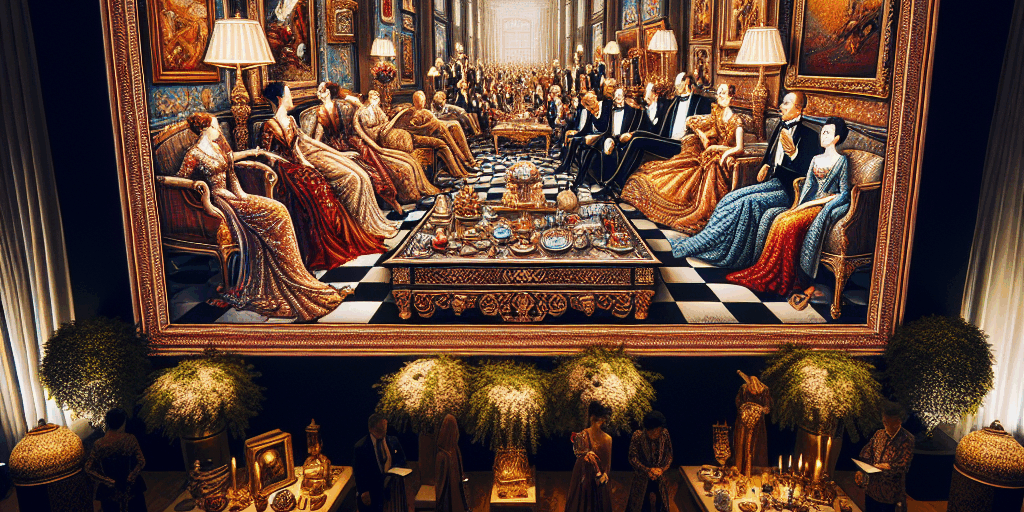Artistry in Wealth: How Family Office Events are Redefining Collectibles
In recent years, the world of wealth management and luxury collectibles has started to undergo a transformational shift, largely influenced by family offices. These private investment firms manage the wealth of ultra-high-net-worth families, and their events are increasingly becoming cultural hotspots, redefining the landscape of what collectibles mean in today’s economy.
The Rise of Family Offices
Family offices are not a new concept; they have existed for centuries, traditionally established to manage the intricate financial affairs of wealthy families. However, the 21st century has seen explosive growth in the number of family offices, primarily fueled by generational wealth transfer, booming asset prices, and the increasing complexity of investments. As these entities gain prominence, they are also beginning to play a pivotal role in the world of art and collectibles.
A New Perspective on Collectibles
Traditionally, collectibles were viewed through the lens of investment—objects of monetary value to be bought, sold, and hoarded. However, family office events are shifting this perspective towards a more emotional and artistic appreciation. These gatherings often feature curated exhibitions that celebrate not just the financial worth of artworks and collectibles, but also their cultural significance and narrative.
Take, for instance, an exclusive family office event featuring modern art presentations. The curatorial choices often emphasize the emotional engagement with art, encouraging attendees to explore not just what’s valuable, but what resonates personally and culturally. This approach fosters a community centered around collective values, experiences, and innovative ideas.
Networking and Knowledge Sharing
Family office events are more than just venues for showcasing art and collectibles; they are networking hubs that facilitate knowledge-sharing among affluent individuals. Wealthy families often share insights into the market dynamics of collectibles, including trends in art, vintage cars, and rare memorabilia. Such exchanges can lead to collaborative collecting, various family offices pooling resources to acquire unique pieces that might otherwise be unattainable.
In addition, these events often feature talks from artists, curators, and industry experts who provide deeper insights into the value and significance of the works being showcased. This knowledge exchange adds layers of understanding, allowing collectors to appreciate the artistry behind their investments.
The Intersection of Technology and Artistry
The advent of technology, particularly blockchain and NFTs (Non-Fungible Tokens), has further transformed the landscape of collectibles. Many family offices are beginning to embrace digital collectibles as part of their portfolios, recognizing them as both an element of modern artistry and a speculative investment. Family office events are increasingly showcasing these innovations, helping attendees understand the intersection between traditional art forms and digital art.
NFTs have created a new dimension of ownership and provenance, allowing collectors to engage with artists in novel ways. Family offices are taking the lead in educating their members about these technologies, ensuring they stay ahead of the curve.
Sustainable and Ethical Collecting
Another critical aspect of family office events is the growing emphasis on sustainable and ethical collecting. High-net-worth individuals are increasingly conscious of their impact on society and the environment. Many family offices are incorporating these values into their collecting practices, seeking out works that support social causes, prioritize sustainability, and are created by diverse artists.
Discussion panels at family office events often focus on the importance of responsible collecting and philanthropy, encouraging attendees to consider how their passion can also contribute positively to the world. This perspective not only enriches their collections but also aligns with a broader ethical stance that many families are adopting today.
Conclusion: A Cultural Renaissance
Family office events are redefining the world of collectibles by merging artistry with wealth management, thereby nurturing a cultural renaissance. As these events continue to evolve, they are promoting a more holistic approach to collecting—one that intertwines passion, culture, community, and investment strategy.
By shifting the dialogue from mere monetary value to the artistic and cultural dimensions of collecting, family offices are not just helping to shape a new generation of collectors; they are fostering a community that values creativity, innovation, and ethical responsibility. In this new era, art is not just a reflection of wealth, but a celebration of artistic expression, intertwining families, cultures, and legacies in profound ways.










